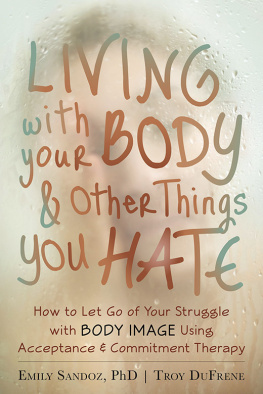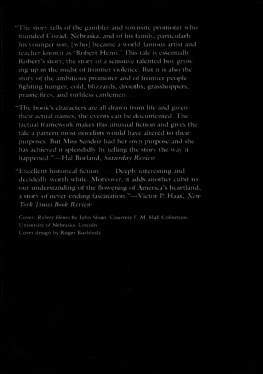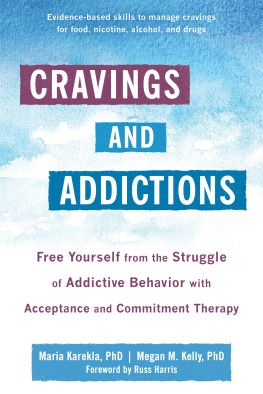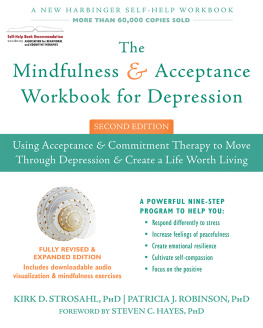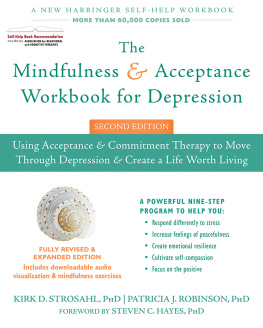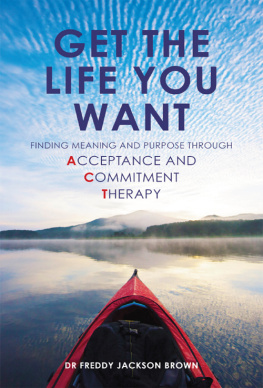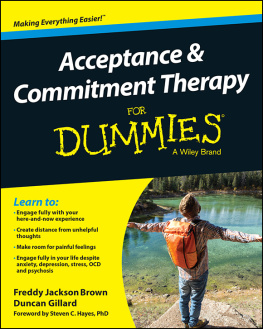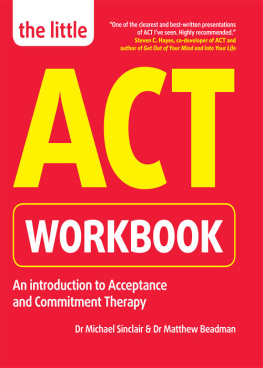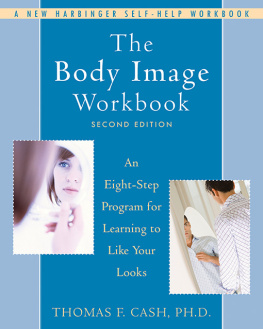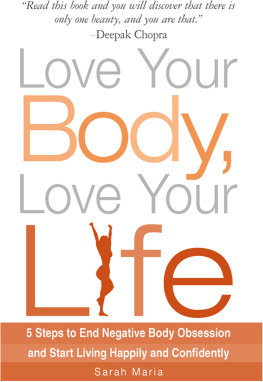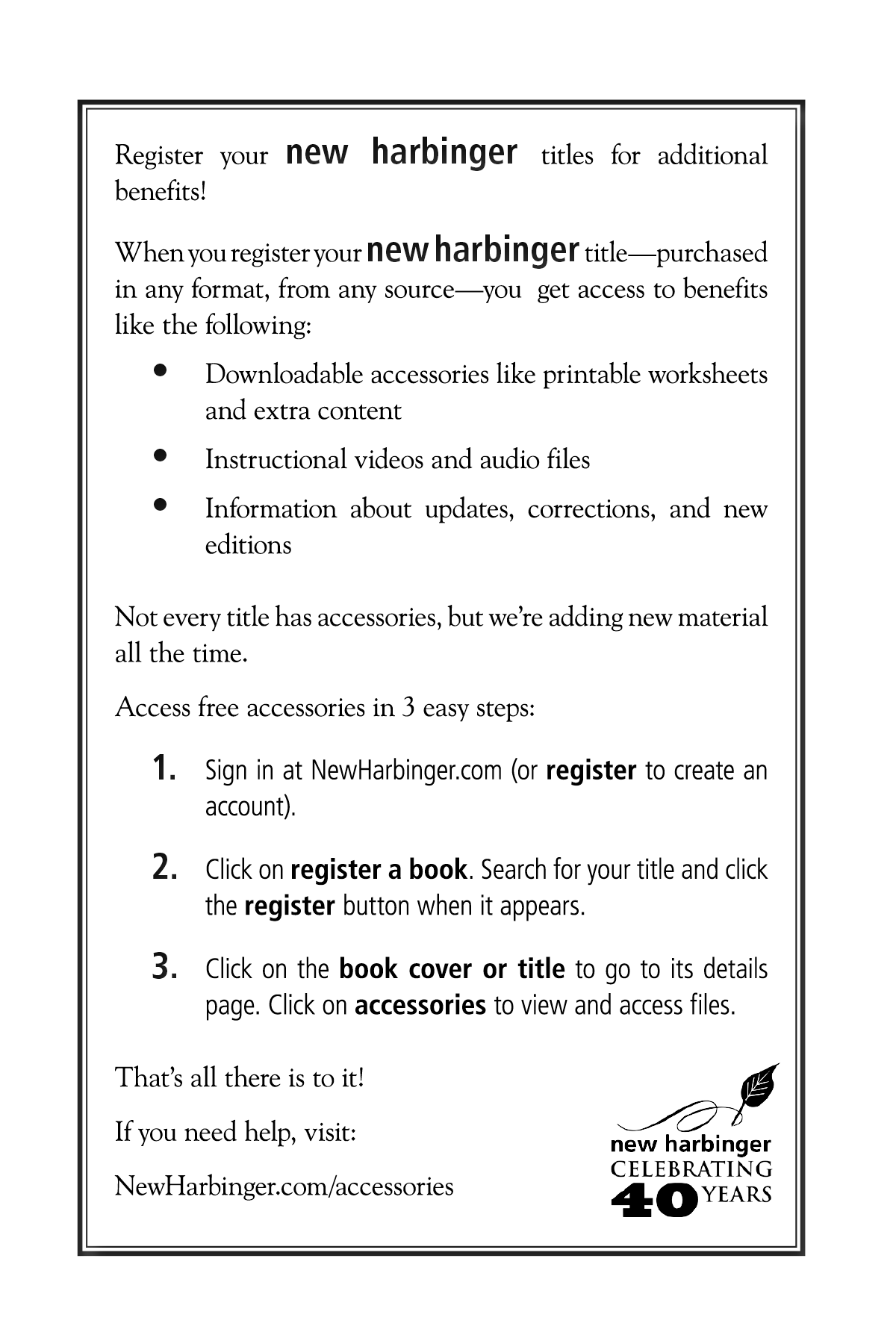

Practical, gentle, and thorough, this book nudges and guides you into your body and your senses. As you learn how to turn down the volume of the chatter and self-judgment there is more room to experience yourself as a whole, physical human being. What a relief, and what an opportunity! Highly recommended.
Steven C. Hayes, PhD, cofounder of acceptance and commitment therapy (ACT) and author of Get Out of Your Mind and Into Your Life
We humans are so often at war with our own bodies. We use our powerful intellect to break ourselves into partsthighs, buttocks, stomach, noseand then often judge these parts as not good enough. We then waste energy trying to fix ourselves and/or become self-conscious and withdraw from life. Living with Your body and Other Things You Hate will help you to declare peace on your body, connect with it, nurture it, and appreciate it. The book never preaches. It uses practical exercises to take you on a gentle, mindful journey. If you are the sort of person who is hard on yourself and insecure about your body, then I believe this book will help you to accept yourself, find your inner strength, and build a life filled with joy and meaning.
Joseph Ciarrochi, author of Get out of Your Mind and Into Your Life for Teens and Mindfulness, Acceptance, and Positive Psychology
Full of wisdom and compassion, this is a beautifully written and highly practical guide to self-acceptance. I wish Id read it thirty years ago; it would have saved me decades of self-loathing!
Russ Harris, author of The Happiness Trap
If you are unhappy with your appearance in any way, this book will help you and others understand what you experience and why. It will explain why your feelings are devastating, and how your struggles to overcome it may have been futile. The authors provide a totally different way to approach the problem of poor self-image. If all other methods have failed, this book offers hope and guidance in a distinctly new way. Acceptance and commitment therapy techniques will teach you to live the life you want, follow your values, and stop struggling for an ideal image. The authors write in a very friendly manner, sharing their own experiences at times, and provide wonderful exercises to follow. I highly recommend this book to everyone who wants to stop struggling and begin living.
Fugen Neziroglu, PhD, ABBP, ABPP, author of Overcoming Body Dysmorphic Disorder and Body Dysmorphic Disorder: A Treatment Manual

To my mother, Anne, who taught me with such care the myriad ways a person can be beautiful
Publishers Note
This publication is designed to provide accurate and authoritative information in regard to the subject matter covered. It is sold with the understanding that the publisher is not engaged in rendering psychological, financial, legal, or other professional services. If expert assistance or counseling is needed, the services of a competent professional should be sought.
Distributed in Canada by Raincoast Books
Copyright 2013 by Emily Sandoz and Troy DuFrene
New Harbinger Publications, Inc.
5674 Shattuck Avenue
Oakland, CA 94609
www.newharbinger.com
Cover design by Amy Shoup
Acquired by Catharine Meyers
All Rights Reserved
Library of Congress Cataloging-in-Publication Data
Sandoz, Emily K.
Living with your body and other things you hate : how to let go of your struggle with body image using acceptance and commitment therapy / Emily K. Sandoz, Troy DuFrene.
pages cm
Summary: Are you comfortable with the skin youre in? If not, you arent alone. Most people are dissatisfied with some aspect of their physical appearance, but if your unhappiness with your looks starts to take over your life, its time to make a change. This book applies powerful acceptance and commitment therapy (ACT) principles to help you accept both your body and negative thoughts, and discover new feelings of validity beyond your reflection in the mirror-- Provided by publisher.
Includes bibliographical references.
ISBN 978-1-60882-104-4 (pbk.) -- ISBN 978-1-60882-105-1 (pdf e-book) -- ISBN 978-1-60882-106-8 (epub) 1. Body image. 2. Self-esteem. 3. Acceptance and commitment therapy. I. DuFrene, Troy, 1972- II. Title.
BF697.5.B63S36 2014
306.4613--dc23
2013039164
Part 1:
Introduction: An Invitation
Ten minutes before the school bus was due, the young mother realized that her eight-year-old daughter, Hannah, was no longer at the breakfast table. Hannah? She called for the child several times as she buckled the baby into his carrier and pulled the coats from the closet. Hannah loved riding the bus. Youre going to miss it, sweetheart, she said as she pushed the bedroom door open. The young mother stopped in the doorway. Hannah, dressed in a blue sweater, stood staring into a full-length mirror, the favorite pink shirt shed worn at the table bunched on the floor next to her. She turned and walked toward the doorway.
It didnt look good, Momma, the child said, as she slipped her arms one by one into the coat her mother was holding. I looked fat in the pink one.
As the day continued, the young mother found herself overwhelmed by the experiencefirst, by the urge to save her daughter from these concerns, then by the urge to understand them. What was it that caused the child to abandon her oatmeal that morning to check her appearance? What did she look for as she peered into the mirror? What did she see on her tiny eight-year-old body that she found unacceptable? Did she find relief in hiding what she saw under the thick sweater? How long before that relief would fade? How long before she would find herself peering into the mirror again? What else might she be willing to do to feel satisfied with what she saw there?
Where You Find Yourself
Were going to go ahead and assume that you find your eyes on these words right now because you know something about the experience of that little girl. Maybe youve slipped away from your own life at times to inspect your waist, your hips, your hair, or your skin. Maybe you know the familiar sinking feeling as your eyes come to rest on that part of your body you cant stand. You might recognize the need to continue peering at your reflection, fixing (or fantasizing about fixing) what you see, even if looking at yourself disgusts or depresses you. You might recognize the relief that comes when you feel okay with what you see in the mirror.
For some of you, perhaps this hasnt been a very serious problem. Maybe you recognize that you worry a lot about how you look, but its never really gotten in the way of any of your relationships, your work, your health, or anything else that matters to you. But then again, maybe it has. Were writing this book right now because for many people, body image is a problem.
Millions of people will organize whole chunks of their lives today around how they feel about the way they look. Theyll wake up an hour early to style their hair or apply their makeup. Theyll change out of a shirt they love because it doesnt look like they think it should, or theyll skip lunch with a friend so they can fit in another workout. Some will pretend to be sick so no one wonders why they arent eating, and others will avoid the eyes of someone who cares about them so they dont have to imagine what she might see.
Next page
